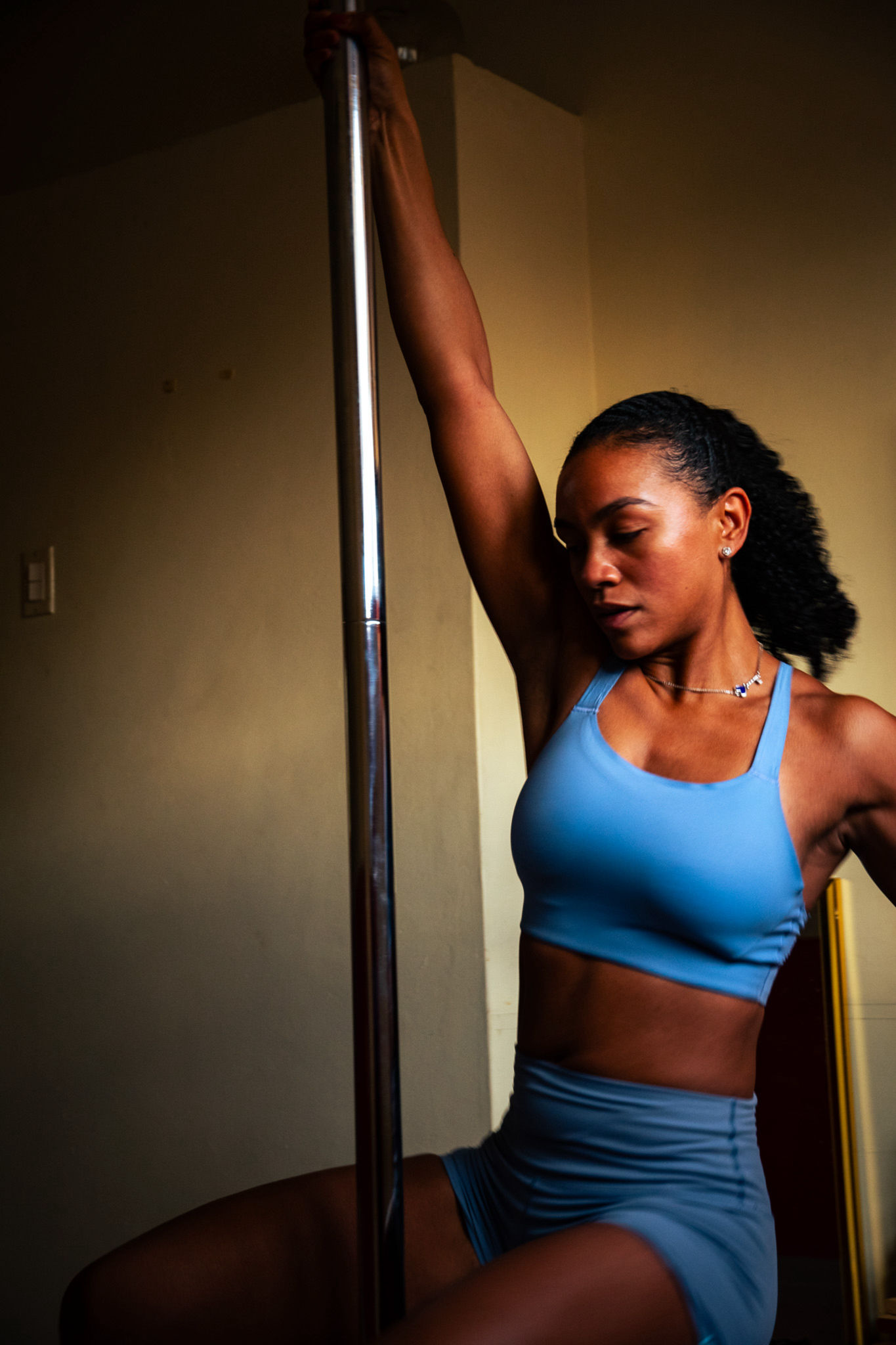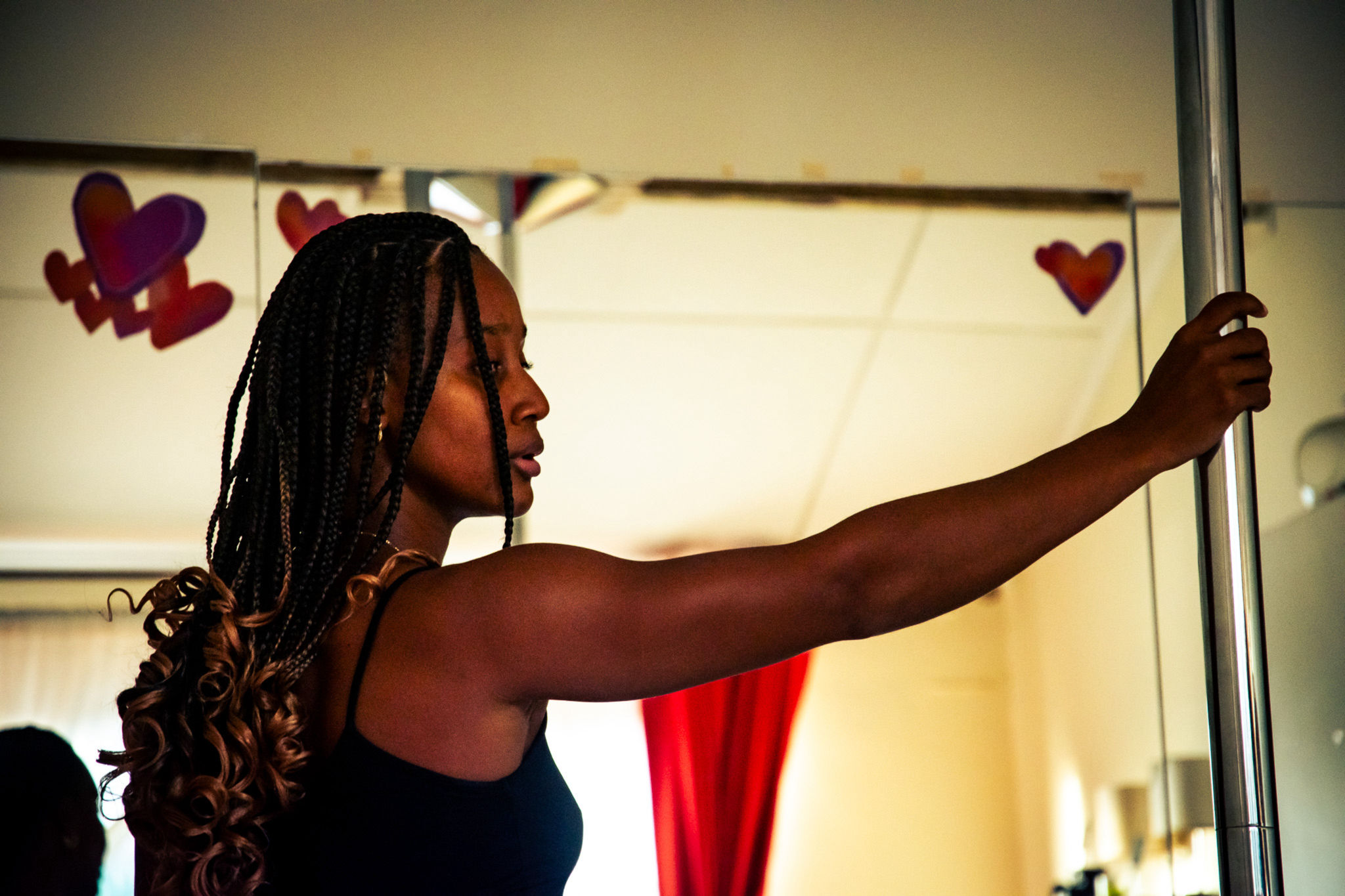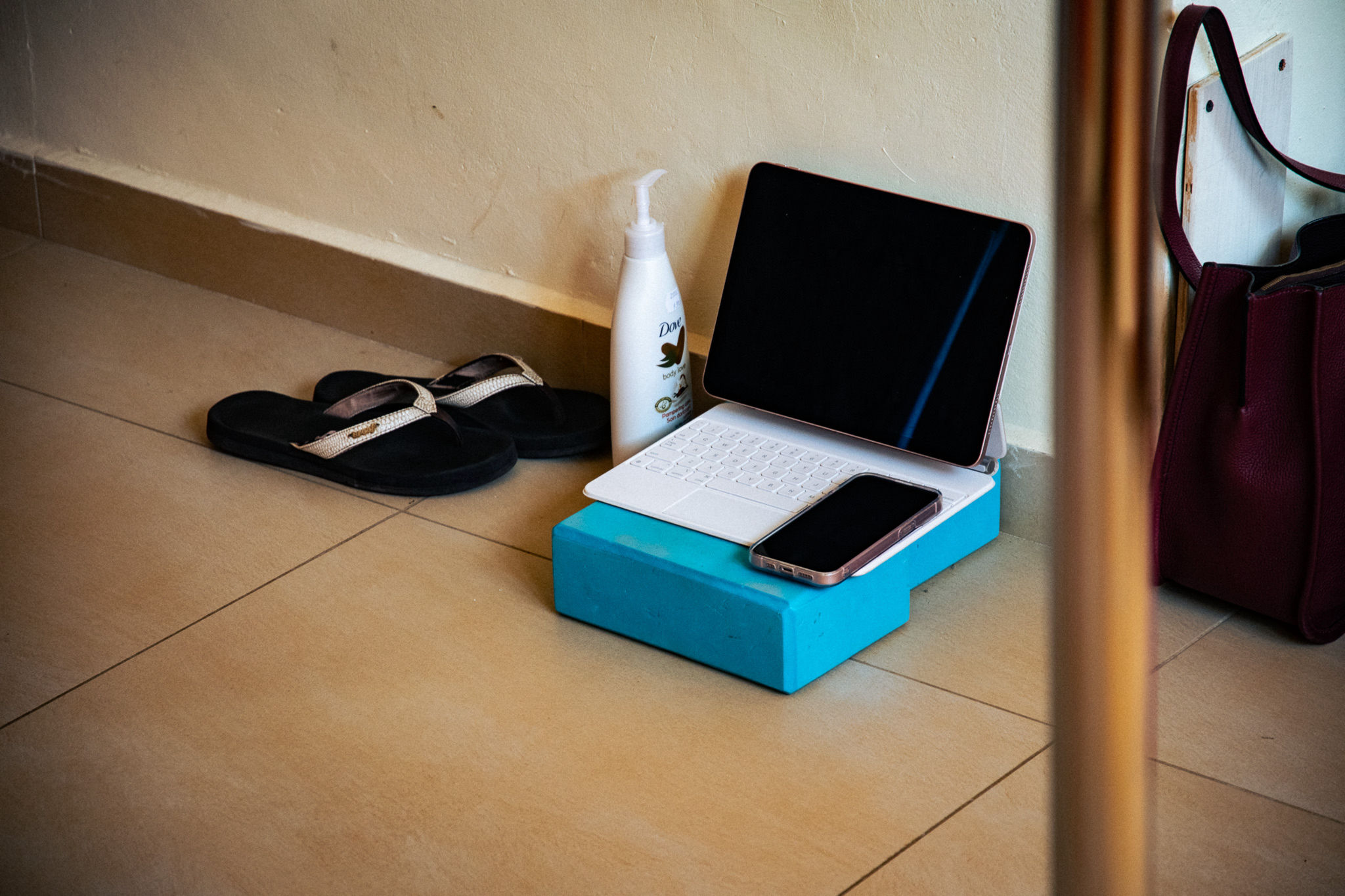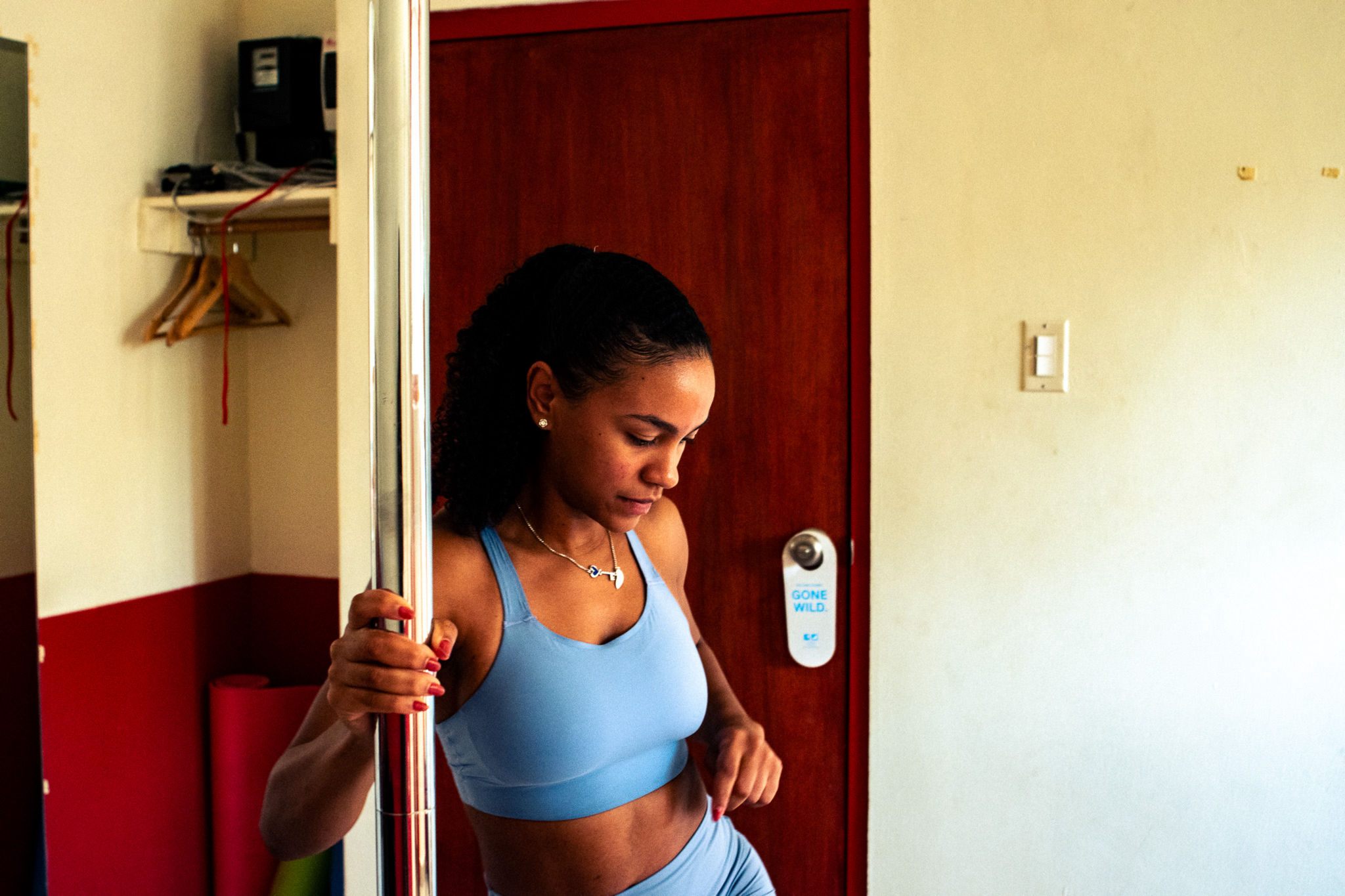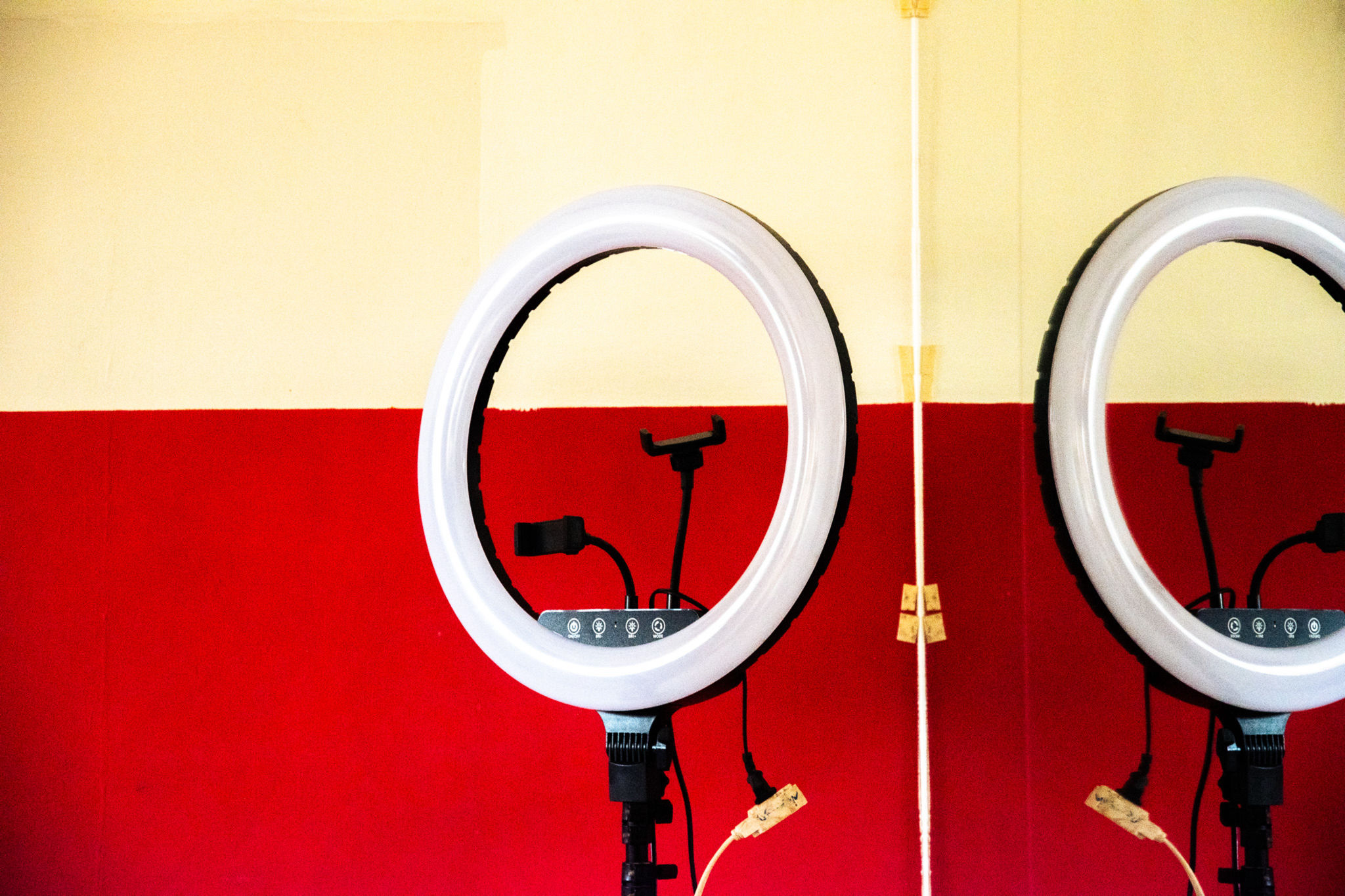Jenn and Marvia start their warm up in a small dance studio. There’s just enough space for two poles. Their moves on the poles are acrobatic, yet graceful, sensual. After a short demonstration of some of the basics, they sit down on the floor. They’re both breathing heavily. It’s a clear sign of how much effort it takes to do what they do. They share how pole dancing first entered their lives.
Jenn started while studying, in a small town in Denmark. She had taken several trial lessons in different activities that would help her pass the time while being so far away form her native island. Pole dancing was the one that immediately stuck: “There’s the fitness side of ‘pole’, as well as the dance side. And there’s a very nice feeling of community too. We’d regularly have ‘pizza pole’ parties.”
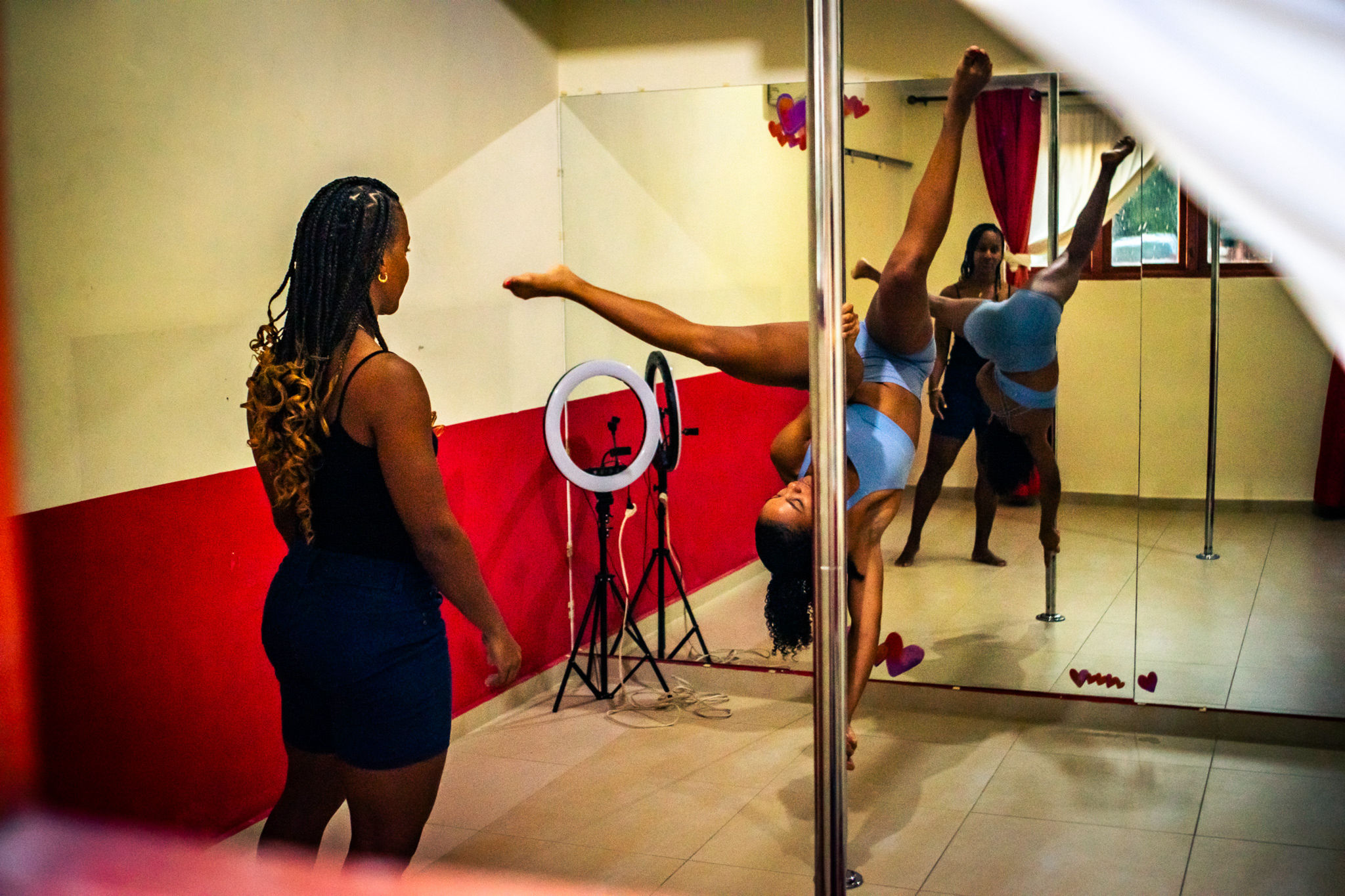
“Of course I took my pole with me when I eventually returned to Curaçao,” she continues. “It had to be checked in as special luggage. It ended up in the middle of my parents living room for a while. My mom didn’t really mind, thankfully. But eventually I could convert this unused space into a dance studio. It’s small, but it allows me to train regularly.”
In Curaçao, Jenn never quite found the kind of community she around pole dancing in Denmark. She did meet some peers that shared her passion for it, like Marvia, who had been part of a short lived ‘pole community’ in Curaçao.
“I had been doing competitive bodybuilding,” Marvia explains. “I participated in bikini fitness competitions abroad. I was in also in a bunch of dance groups. At one point a friend asked me to try out a ‘pole’ group. I thought it would be a bit much with all the other things I had going on, but it did fit right up my alley. Pole dancing brings together elements of both power and dance. My friend never showed up for that first lesson, but it didn’t matter: I was already hooked.”
← swipe →
Marvia picked up the basics of pole quite quickly, as she explains: “My father is my bodybuilding trainer, so I asked him what muscles I should train for movements required for pole. It all went very fast and when the instructor stopped giving lessons, I took over the class.”
“The classes were pretty busy for a while. Pole dancing was new on the island and was intriguing to a lot of young women. But, as it often go here on this island, its popularity waned after it had lost its novelty. It also became clear to many participants that it takes hard work to actually get better at it. The number of people in the classes got so low, that it wasn’t sustainable to keep teaching.”
Marvia went back to bodybuilding and other dance forms. So by the time Jenn got back to Curaçao, there were barely any people practicing pole dancing. “I do sometimes train with a friend,” Jenn explains, “but most of the times I’ll be by myself. And sometimes when I tell people that I do pole, I still might get people looking at me weirdly.”
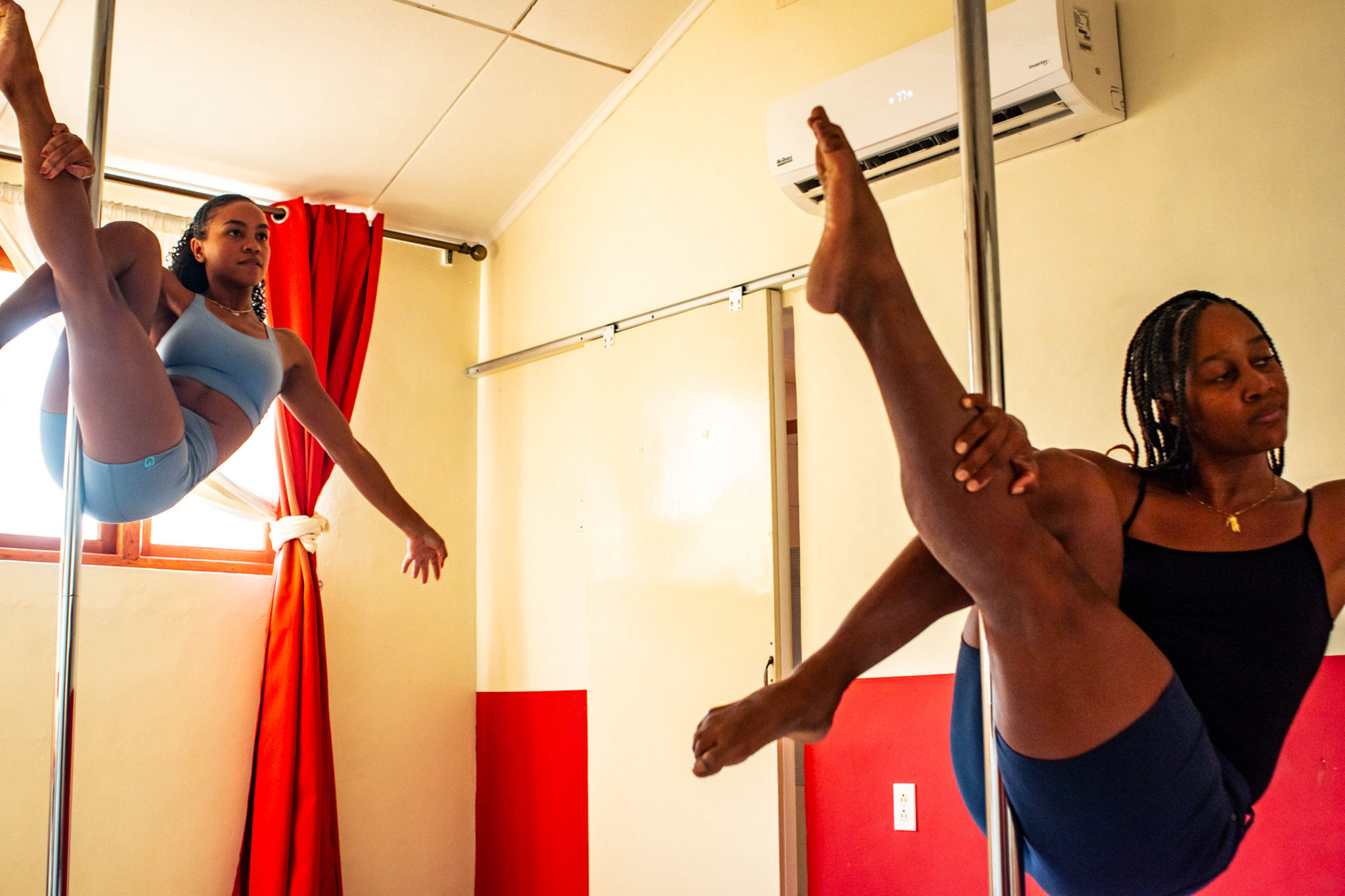
Marvia explains that this was no different when she started: “People would say, ‘Oh, you do pole dancing? So you’re a stripper?’ It’s a typical reaction here on Curaçao. Because the only pole people know about, was the one at Campo Alegre. So when people realized we also had some teenagers in the classes, Facebook blew up with people commenting things like ‘you turning our children into whores!’”
Jenn continues: “Those people don’t realize that it’s a sport and that what happens in a strip club couldn’t be further away from what we do. In there the pole is often little more than a prop around which strippers dance. Our sport is more like acrobatics, it requires a completely different set of skills. You’ll see us hanging upside down and doing things that require a lot of power and technique.”
Jenn’s Instagram handle is @jennkabesabou, meaning: Jenn upside down.
← swipe →
“There are international tournaments in pole,” Jenn continues, “with different categories. Some are centered around physical strength and skills, while others might be more sensual and theatrical. Pole might actually even become an olympic sport in the near future. Who knows, I might one day expand the studio and try to get more people involved.”
Marvia adds: “There’s just not a lot of people practicing pole on the island nowadays. We do try to organize small scale activities together with those who are still into it. But the community is just too small to organize real events or competitions. One day maybe.”
Islands is a series of portraits of people who have a unique hobby or lifestyle on the Caribbean island of Curaçao. They are ‘islands unto themselves’, who can be seen as ‘strange’ locally, but often turn out to be a source of culture and inspiration for the island. Words and photography by Lyangelo Vasquez
